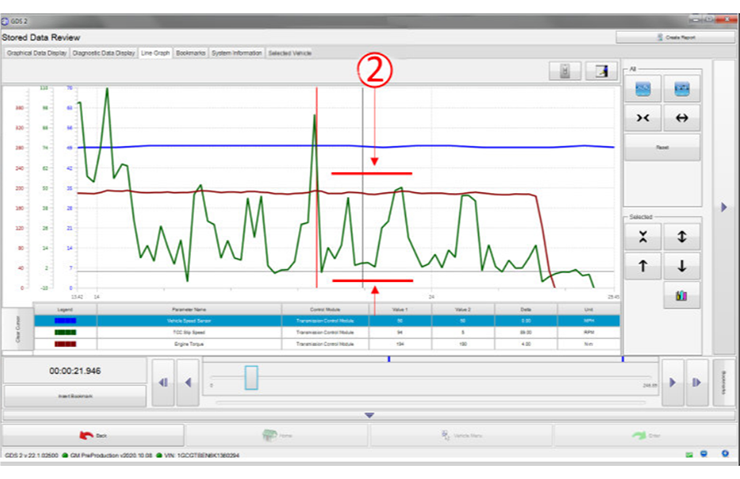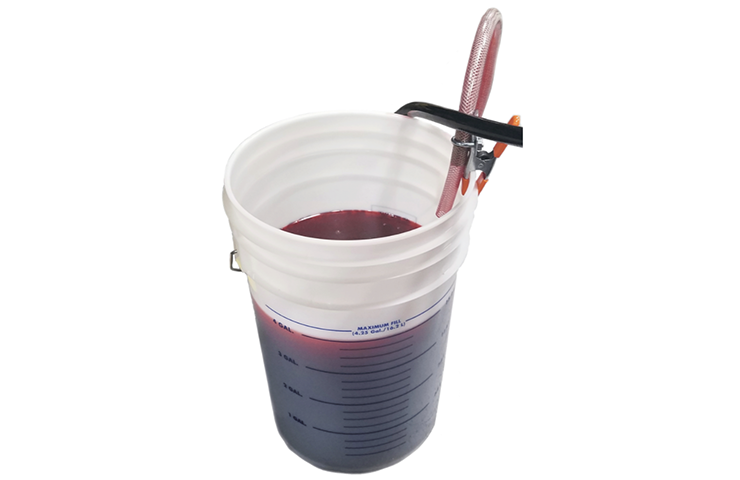Some 2019-2020 Colorado and Canyon models equipped with the 8L90 8-speed automatic transmissions (RPO M5T) – VIN breakpoint from March 1, 2019 to End of Production – may have a shake or shudder condition during light throttle acceleration at 25-80 mph (40-128 km/h) when the transmission is not actively shifting gears. The condition may be described as driving over rumble strips or rough pavement.
Shudder can be evident in both Drive and M7 mode. It will not occur with the Torque Converter Clutch (TCC) locked (zero slip) or released (open).
TIP: After repairs for a shudder condition, any vehicle that returns with suspect shudder should be diagnosed using the diagnostics in the appropriate Service Information, GDS, PicoScope and other diagnostic tools. Sometimes shudder is not caused by the TCC and may be the result of a chuggle, surge or vibration. Repairs for a TCC shudder should only be completed once per vehicle. Additional information can be found in Service Information under Torque Converter Diagnosis.
The TCC Slip Control Test using GDS 2 (Fig. 7) or the TCC Shudder/PicoScope Test should be followed to diagnose a TCC shudder condition. These diagnostic methods are covered in Bulletin #21-NA-047.
 Fig. 7
Fig. 7
Evaluate the vehicle on a smooth road with transmission sump temperature at 122°F-158°F (50°C-70°C), engine speed between 1,100 rpm and 1,500 rpm, and engine torque between 150Nm and 250 Nm.
Be sure any other known vehicle vibration issues (tires, brakes, etc.) have been corrected before conducting testing. If TCC shudder is present, a vibration peak (using the PicoScope) will appear. (Fig. 8) TCC shudder vibration frequency is stationary in 8th gear. If the vibration frequency follows vehicle speed or engine speed, then it is not TCC shudder.
 Fig. 8
Fig. 8
If the test results show a vehicle has a degraded TCC RPM slip at steady throttle or TCC shudder frequency at slight tip-in, the appropriate fluid exchange procedure should be completed using the DT-52263 Transmission Fluid Exchange Kit (Fig. 9) and the DT-45096 TransFlow Cooler Flush Machine.
 Fig. 9
Fig. 9
The fluid exchange procedure must be followed as published in Bulletin #21-NA-047. The exchange process is required to obtain the proper level of new blue label Mobil 1 Synthetic LV ATF HP fluid. Intermixing of other types of transmission fluid or aftermarket additive packages will result in a low concentration level of new fluid and will not provide satisfactory results.
Refer to Bulletin #21-NA-047 for complete testing and repair procedures as well as parts information.
– Thanks to Mark Gordon



















Has a testing labor op code been added?